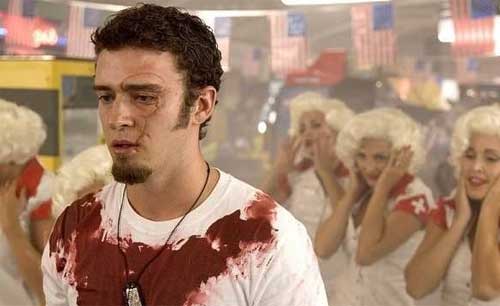Title: Pacific Rim
Uprising
Director: Steven S.
DeKnight
Released: 2018
Starring: John
Boyega, Scott Eastwood, Jing Tian, Cailee Spaeny, Rinko Kikuchi, Burn
Gorman, Adria Arjona, Zhang Jin, Charlie Day
Plot: Ten years
after the events of the first film, society has begun to rebuild
itself believing that the Kaiju threat has long been defeated. Jake
(Boyega) the son of the now legendary Stacker Pentecost and now a
disgraced former Jaeger pilot makes a living selling Jaeger parts on
the black market only for a chance encounter with Jaeger enthusiast
Amara (Spaeny) to see them both being drafted into the PPDC as the
threat of the Precursors and their Kaiju creations threatens the
world once more.
Review: Pacific
Rim Uprising was unquestionably
a film I was looking forward to, even if my general lack of desire to
pay for overpriced cinema tickets has meant that it's taken me until
now to actually watch it. Needless to say with Del Toro not returning
for this sequel there was certainly an element of doubt if it could
love up to his original love letter to the Kaiju genre and for the
most part I feel that Steven S. DeKnight's follow up continues
to build upon the world Del Toro had established. In
the years which have passed the Pan Pacific Defence Corps have once
more become recognised as the key defence and as such no longer the
rag tag band of pilots scrabbling for resources through black market
deals for Kaiju parts.
At the same time it
should be noted that this is a much more busy and louder film as
DeKnight revels in the chaos and destruction compared to the Del Toro
pacifist approach which focused more on the battle between giant
robot and monster than potential collateral damage. Now while both
movies certainly provided the same buzz and excitement from these
scenes I wanted as a life long Kaiju fan there is an unquestionable
feeling that the DeKnight's is lacking something.
Plotwise there is a
real mish-mash of ideas at play and while seeing the PPDC turned into
a heavily funded war machine is a welcome evolution for the series
even if one potentially set to be made obsolete by a new drone
program. At the same time Jake the son of rousing speech maker and
leader Stacker take on the hero duties this time as he finds himself
drawn back into the fold as the Precursors launch their latest
offensive which sees the film working more of the enemy within angle
which ties it nicely to the original film aswell leading to a more
meaty role for one of the few characters who make their return when
their betrayal is inevitably revealed. The rest of the film though
is this weird mix of Kaiju fun with an undeniable and unneeded and
not mention unwanted Top Gun vibe as Jake and his former
co-pilot Nate (Eastwood) play out a Maverick / Ice Man dick swinging
contest which would have honestly worked better if they were rival
pilots ultimately forced to team up than co-pilots from the start.
Throw into the mix an unresolved love triangle and it just feels like
it's padding out the run time.
One of my initial
concerns regarded how both Jaegers and Kaiju were shown in the
trailers, which honestly left things looking like a reskinned
Transformers movie, here the camera work is just as impressive
as the first film even if the action is alot more hectic than the
lumbering intense battles of the first film. It's just a shame that
the film suffers from some truly horrible sound design which only
serves to cheapen and detract from the film as radio mics crackle and
weapons would sound more impressive if you just made your won Pew Pew
sounds. Thankfully the action sequences are still fun to look at with
plenty of Jaeger tech being showcased here and sure while no one
might be using a cargo ship as a makeshift bat the new set of Jaegers
all come with their own fun toys to battle not only the Kaiju
monsters this time but also the new drones which perhaps might feel
alittle too close to the aforementioned transformers, but thankfully
it’s given enough of a spin to work.
While Del Toro's
absence is certainly noticeable here, it's still a fun (if flawed)
experience that I enjoyed my time with, while DeKnight's own
additions to the series like the mini Jaeger "Scrapper" and
the rival Shao Corporation only help to make this a fuller and more
exciting world which I hope that they continue to explore with
further films.


































